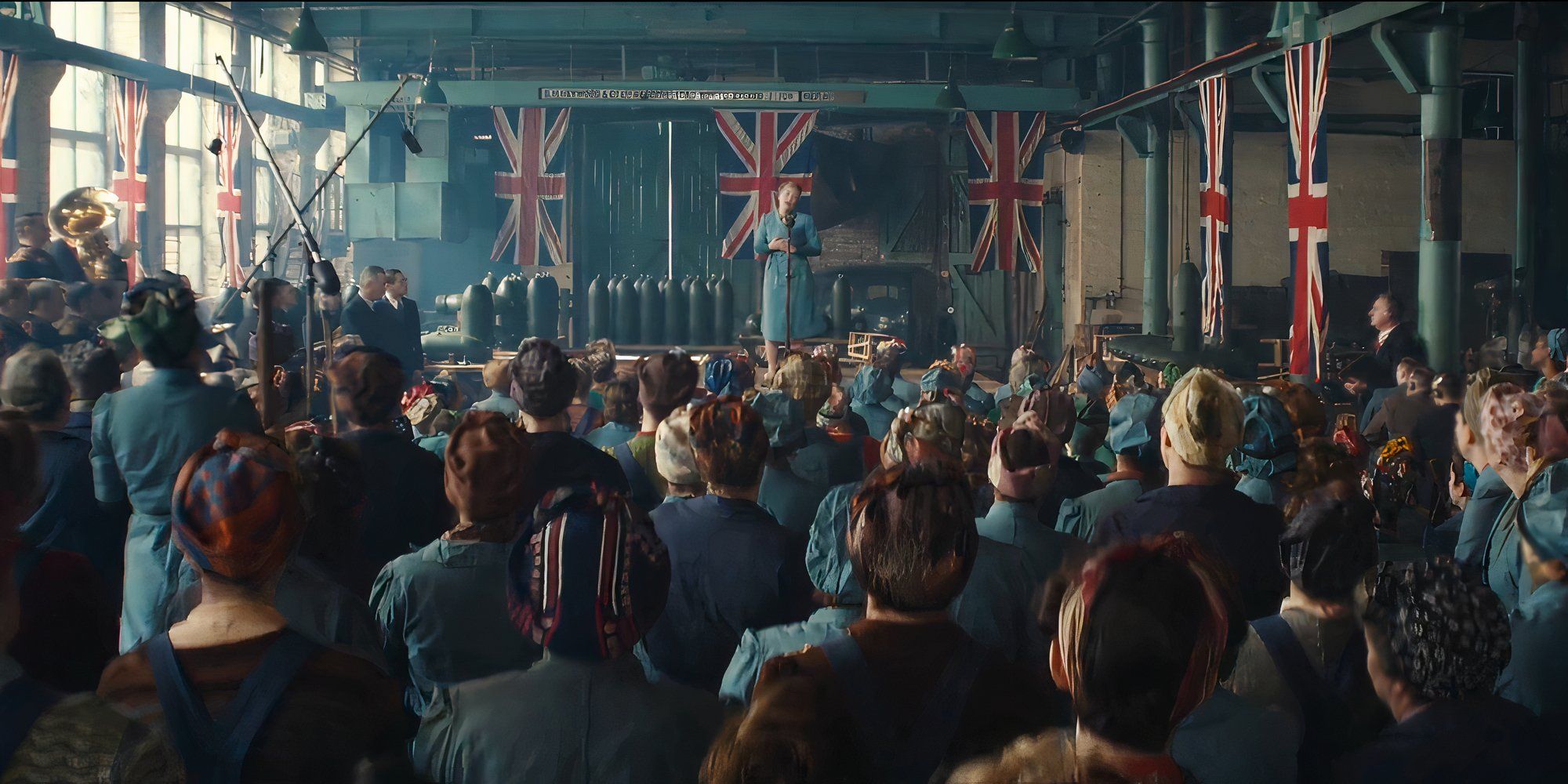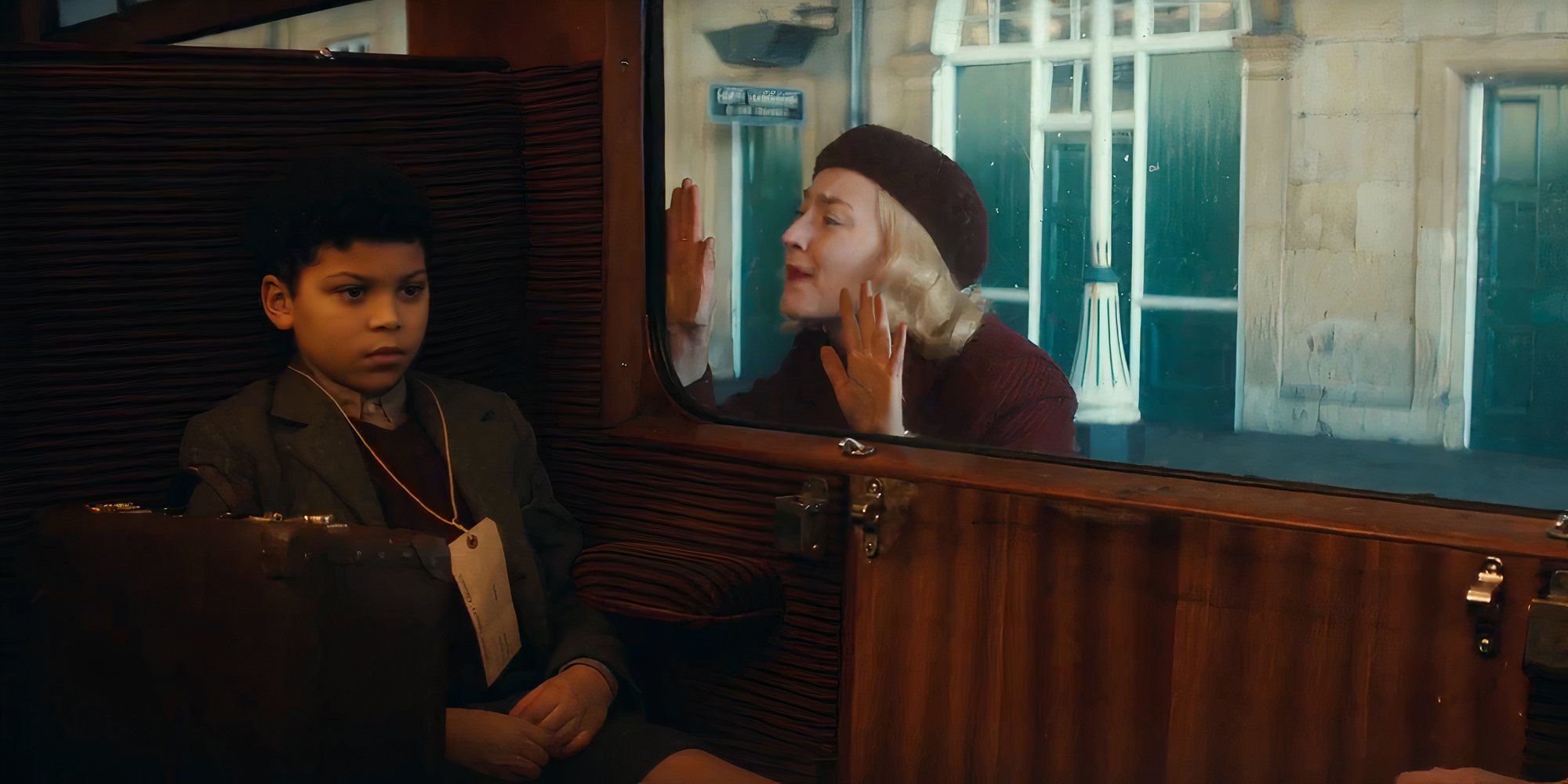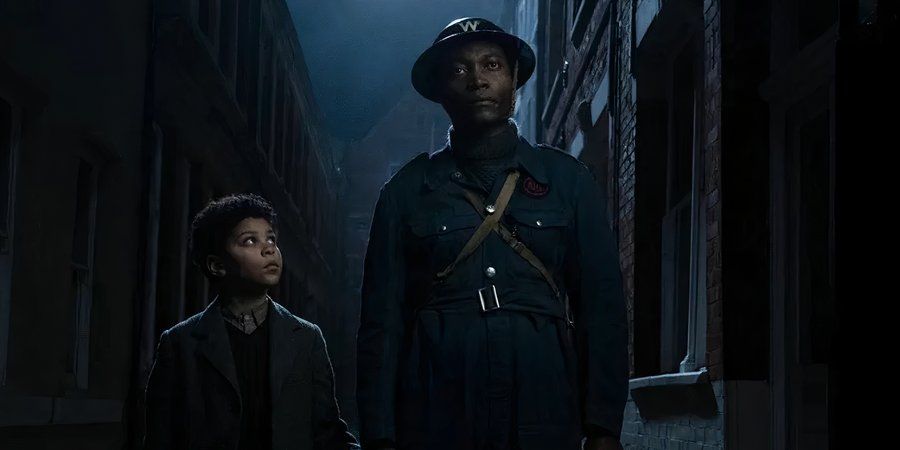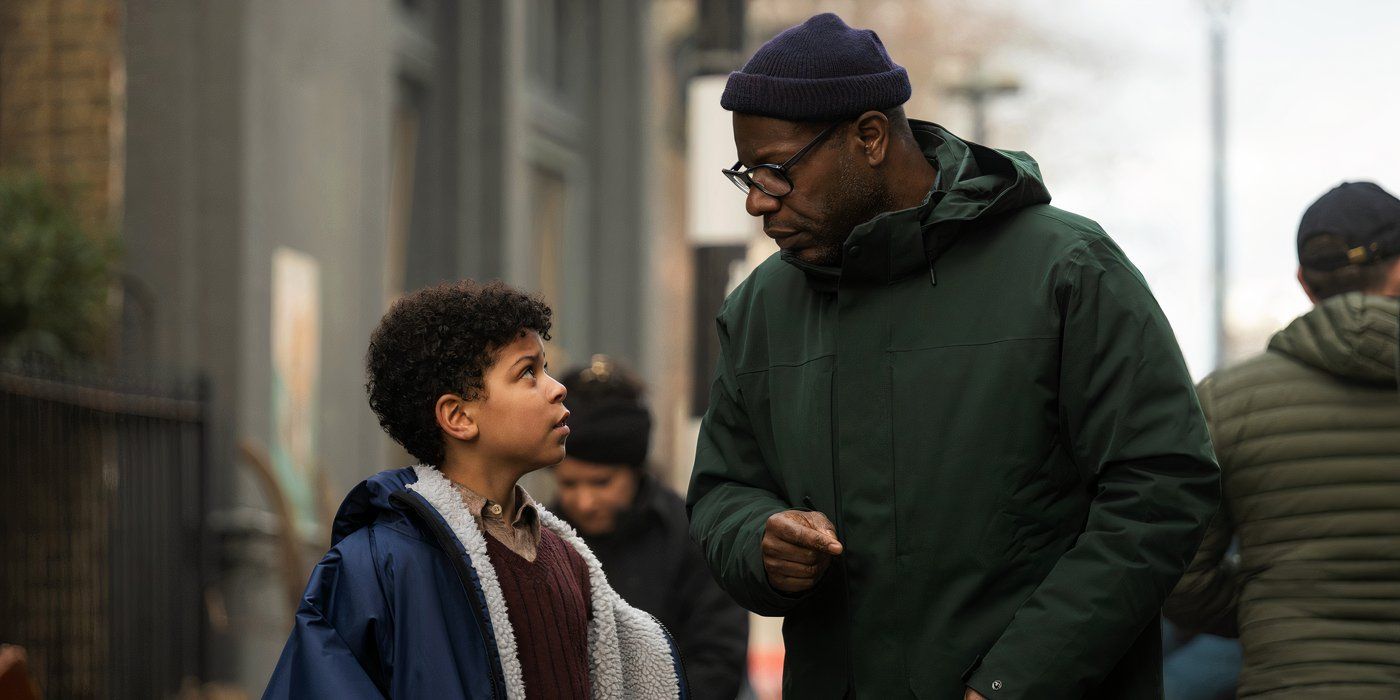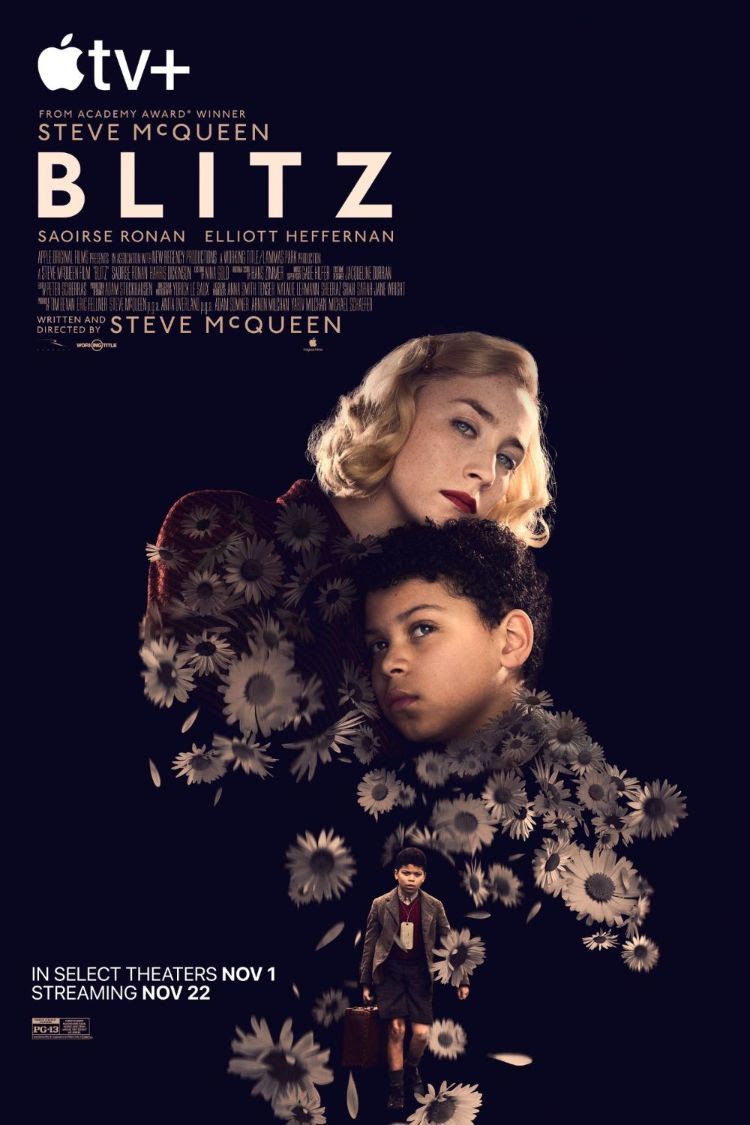Director Steve McQueen’s Blitz is a historical fiction drama starring Saoirse Ronan Elliot Heffernan as Rita and her son George. The film follows George’s evacuation from London amid the Nazi’s blitzkrieg bombings of London, which lasted from September 1940 until May 1941 (via Imperial War Museums), the term “blitzkrieg” being German for “lightning war.” The bombings killed 43,500 civilians across the U.K. The rebellious George embarks on a perilous journey to return to his mother and finds himself faced with the tragedies of World War II that she tried to protect him from.
While the Blitz was a major historical event during World War II, Blitz‘s ending reflects a fictionalized account of this period. Blitz‘s characters are not real people, but the deeply personal narrative structure offers a window into the harrowing experience of surviving the Blitz, and the devastation of its aftermath. Operation Pied Piper did indeed see some 800,000 children evacuated out of London to save them from the bombings (via History). Blitz bases several of its pivotal scenes on real moments and phenomena, with a few changes to drive its dramatic delivery.
Blitz’s Main Characters Are Fictional
However, George Is Inspired By A Real Photograph
Blitz’s Rita and George are fictional, but loosely based on real people. Rita works in a factory, along with countless other women, in difficult conditions. Women were a major part of the workforce during World War II across the world, especially in the U.S. and U.K. (via National World War II Museum). Rita is also an aspiring singer and sings several jazz songs throughout Blitz. Rita’s love of music is one of the film’s many personal touches that showcase the humanity of those suffering from the brutality of war.
Meanwhile, George is based on a real image of a young Black boy holding a suitcase during the evacuation orders in London in 1940 (via USA Today). The haunting image is what inspired McQueen to make a film about the personal effects of the war on everyday Londoners. Blitz is unique in that it manages to simultaneously explore the nuances of race and class in Britain in the 1940s. George’s father is revealed to have been racially profiled and arrested before the events of the film. Hence, George lives with his mother and grandfather.
“Winter Coat” Was Written For Blitz
The Jazz Style Song Is An Easter Egg For The Blitz Director
Rita sings several songs throughout Blitz, and “Winter Coat” was written specifically for the film, which was scored by Hans Zimmer. The track offers a 1940s swing jazz feel that only makes Blitz more immersive. Rita dedicates the song to George after he is evacuated from London, and performs it during a BBC radio performance. The concept came from McQueen’s personal life: He inherited his grandfather’s winter coat from the era during which the film is set and wanted to pay homage to the family heirloom.
The track showcases Rita’s perspective of the evacuation orders.
“The idea of putting this coat on, and the presence of someone around your body – it’s almost like a hug,” McQueen told USA Today. The track showcases Rita’s perspective of the evacuation orders. She is clearly a loving and devoted mother and fears both dying in the Blitz and leaving George orphaned, as well as any harm that could come George’s way. Music is a throughline in Blitz, as George and Rita are also frequently seen playing the piano and singing with George’s grandfather, Gerald (Paul Weller).
When George makes the pivotal decision to jump from the evacuation train and run back to his mother after experiencing racist bullying, his memory immediately takes him to a place of happiness. The memory shows his Grandfather comforting him after he is bullied in the street, and the family singing a song together. Swing music and jazz were often used to unite people during World War II and offer moments of solace for small victories. Soldiers also sang together to pass the grueling time of waiting for battles to begin.
Did The London Subway Tunnels Really Flood During World War II?
Yes, & Blitz Is Based On The Flood
London has an extensive subway system known as the Tube in modern times. Some of the subways were used as bomb shelters during the Blitz, and many remained operational as part of the evacuation system. As George makes his way back to London, he is caught in a subway flood and very narrowly escapes. The flood in the film is loosely based on the real 1940 flood in a London subway station that killed 64 people. In reality, a nine-year-old boy saved the few who survived. The incident is known as the Balham Station Disaster.
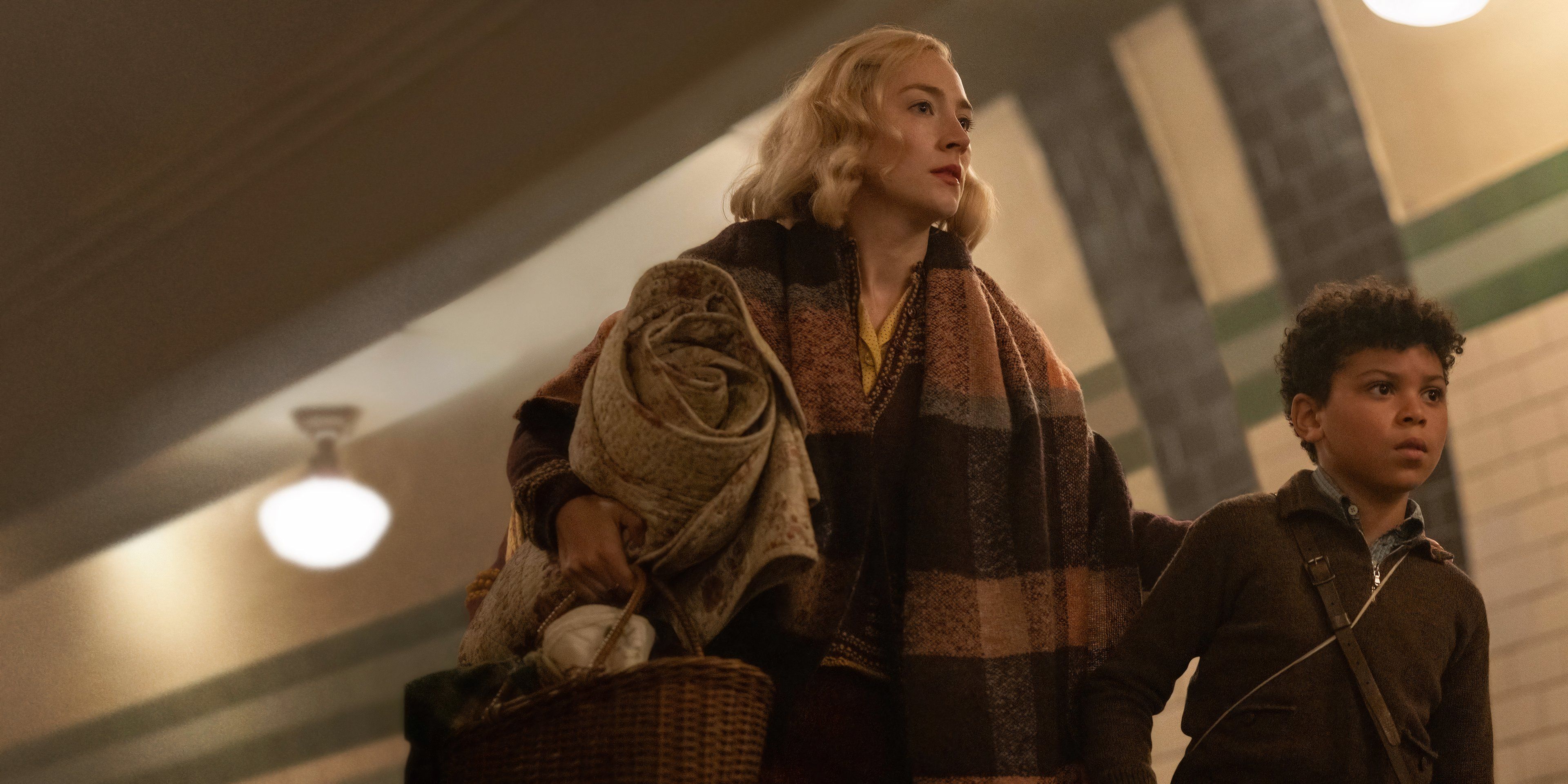
Related
Blitz Review: Steve McQueen’s Harrowing Drama Suffers From Emotional Detachment
I wanted to sit with the experiences of George and Rita as they go on very separate journeys throughout the film, but McQueen keeps us at a distance.
The flooding occurred when an air raid struck a bus above ground, and the explosion hit a water pipe that in turn burst and flooded the underground area. The incident, and its dramatized version in Blitz, truly capture the frenzy and panic of the bombings and the level of destruction they caused to many everyday urban systems and historical landmarks.
Interracial Relationships In London In The 1940s Were Still Fairly Rare
Interracial Marriage Was Never Illegal In The U.K., But The Social Stigma Remained
A flashback explains that Marcus (CJ Beckford), George’s father, was the victim of a hate crime at a swing dance club that he attended with Rita. By the time of the events of Blitz, his whereabouts are unknown, but it is insinuated that he was wrongfully incarcerated or potentially deported to Grenada. Unlike in the U.S., interracial marriage was never legally prohibited in the U.K. However, these relationships were often the subject of a lot of discrimination.
At the time of Blitz, interracial relationships were not entirely common, and the film offers an honest look at the challenges associated with Marcus and Rita’s union.
Blitz offers a glimpse into the Black experience in Britain during World War II, a perspective often lacking from historical dramas about this period. While the war did bring a sense of solidarity to many nations working to fight the same enemies, both the U.S. and the U.K. had and still have to reckon with the everyday horrors of racism and discrimination. At the time of Blitz, interracial relationships were not entirely common, and the film offers an honest look at the challenges associated with Marcus and Rita’s union.
George lives with the same identity questions that impact many multiracial and multi-ethnic children but against the backdrop of the atrocities of war. He visibly attempts to shrink these personal issues as he grapples with the reality of dodging bombs with his mother and grandfather, and his father’s disappearance from his life. His character shows how, despite much evolution, many children still face the same challenges.
Ife Is A Unique Depiction Of A Nigerian Immigrant In England
Nigerian Immigration Increased To Britain In The 1960s
While on the run from the evacuation efforts, George encounters a kind ARP Warden named Ife Benjamin Clementine). The warden holds George’s hand and offers him a moment of calm amid his long journey, and the pair later sing in the streets together as George joins Ife for his nightly neighborhood patrol during which he asks people to turn off their lights for safety from the bombings. Ife and George bond over their Black identity, and he reveals that he moved to London from Nigeria, and has Yoruba lineage.
Ife is based on a real warden during World War II (via The Cinemaholic). His real name was Ita Ekpenyon, and he was born in Nigeria in 1899. He worked as a teacher before moving to London to pursue a law degree in 1921 when he was 28 years old. He went on to act in films in the 1930s but was too old to enlist in the army at 46 in 1939. He later joined the D Section St Marylebone Borough Council Civil Defense Volunteer group to do his part.
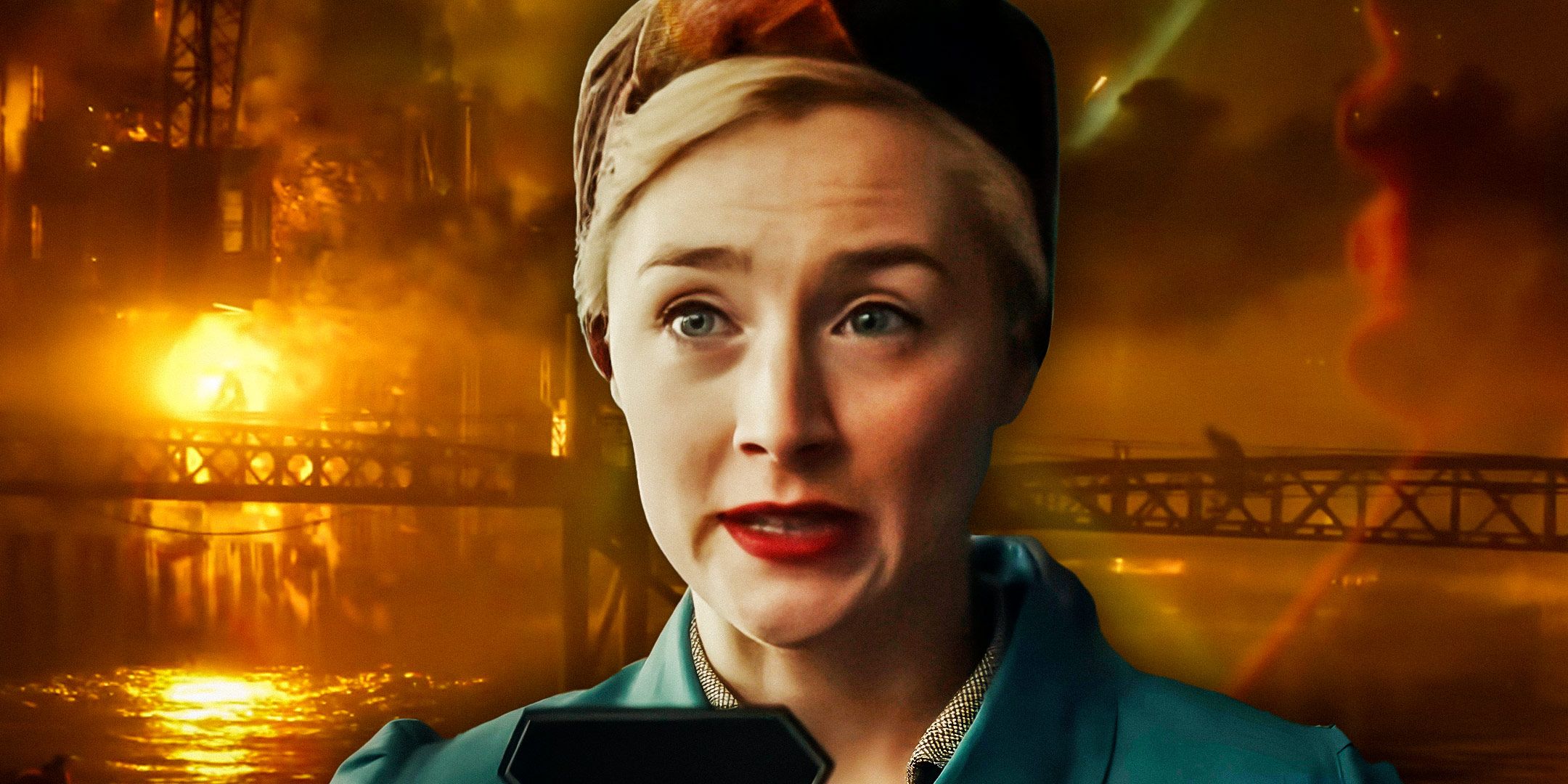
Related
How Long The Blitz Lasted During WW2
Steve McQueen’s Blitz has finally been released, and here’s what you need to know about the real-life World War II event that it is based on.
Ife dies in an air raid in the film, but the real Ite survived a similar incident. His story is unique — London welcomed a larger wave of Nigerian immigrants in the 1970s after the nation gained independence from Britain in 1960 (via Gov.UK). British Nigerians have a rich history within the nation, making Ife an important and representative character in Blitz.
Many Children Never Reunited With Their Parents After The Blitz
George’s Story In Blitz Is More Hopeful Than Most
The McQueen drama exhibits the message of hope in times of despair present in the director’s other most notable historical epic, 12 Years A Slave. After narrowly escaping a subway flood, corpse robbers, and several nights of bombings, George finally manages to make his way back to his mother in London. The pair tearfully reunite amid the devastation that surrounds them. In reality, many British children did not have such luck. Thousands of children returned to a war-torn London orphaned or having lost their siblings to the brutal raids.

Related
Where Was Blitz Filmed? WW2 Movie’s Filming Locations Explained
The Apple TV+ film Blitz used several locations in England to recreate 1940s London and the infamous German bombing of the city in World War II.
Even as George is struggling to find his way home, Rita begins looking for him when she learns he never made it to the countryside. Family friend Jack (Harris Dickinson) helps Rita in her search. In truth, many parents were strapped to military and labor responsibilities, and would not have had the liberty to embark on a lengthy search for their children. However, the family bonds at the heart Blitz make its fictionalized characters feel all the more realistic, and the discrimination that George, Marcus, and Ife face is partially symptomatic of the global impact of fascism on history.
Sources: Imperial War Museums, History, National World War II Museum, USA Today, The Cinemaholic, Gov.UK


